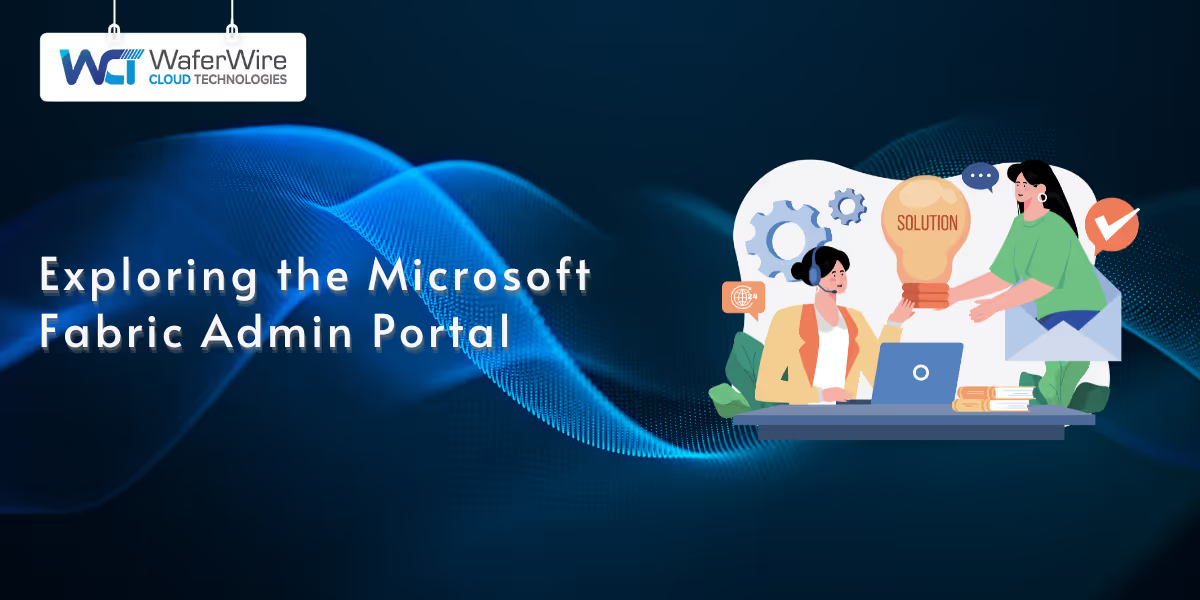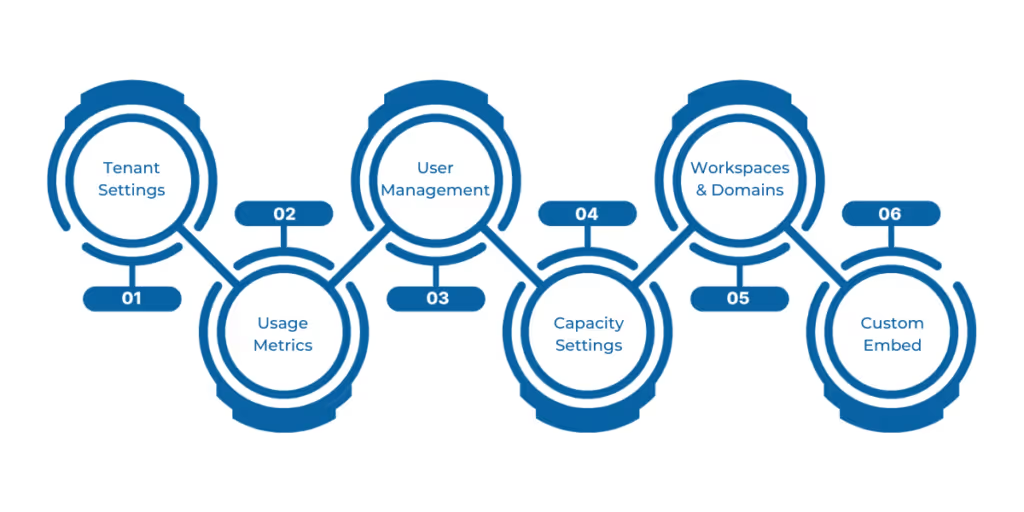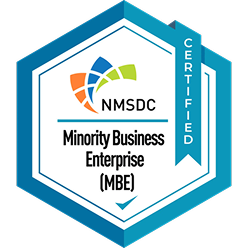

Data is the lifeblood of modern businesses, but without the right controls, even the most powerful analytics platforms can become chaotic. The Microsoft Fabric Admin Portal comes to the rescue. Think of it as mission control for your organization’s data landscape: a centralized dashboard that allows you to manage access, monitor performance, and enforce governance.
Whether you’re an IT admin focused on maintaining security or a data leader ensuring smooth operations, the Fabric Portal puts you in complete control. In this guide, we explain how the Fabric Admin Portal simplifies complexity and serves as the unsung hero of every efficient data team.
The Microsoft Fabric Admin role is responsible for overseeing and securing the resources within Microsoft Fabric. Admins use the Fabric Portal to configure and control the platform's various elements, ensuring smooth operation across their organization. Admins can manage users, define access roles, monitor system performance, and deploy applications efficiently.
The Fabric Portal serves as the primary interface where administrators can control access to different resources, create and manage environments, and ensure that governance policies are applied correctly. With this tool, they can also track usage statistics, resolve issues, and adjust system configurations as needed to optimize data workflows.
For example, an IT admin can securely assign or revoke user permissions to sensitive data. At the same time, a data leader can monitor and allocate system resources to meet the business's evolving needs.
Having understood the importance of the Microsoft Fabric Admin, let’s delve deeper into its key features and functions to see how it enhances resource management and governance within your organization.

The Microsoft Fabric Admin Portal is packed with features that streamline and optimize data management for businesses.
The Fabric Portal enables admins to enable or disable specific Microsoft Fabric features, aligning with their organization’s needs. Admins can also configure tenant settings to manage essential aspects, such as security, data residency, and recovery processes.
Through these settings, admins can control access levels, define data storage policies, and set disaster recovery strategies that are vital for maintaining business continuity.
With Usage Metrics, admins gain valuable insights into how Microsoft Fabric features are utilized within their organization. The Feature Usage and Adoption Report shows which features are being adopted by users, helping to track engagement and make informed decisions on where to focus resources.
This data-driven approach ensures that businesses utilize their data resources efficiently, enabling organizations to optimize feature adoption for maximum impact.
The Fabric Portal integrates seamlessly with the Microsoft 365 Admin Center, allowing admins to manage users and groups across both platforms. Admins can assign roles, monitor user activity, and maintain control over access permissions—all from one central dashboard.
Moreover, License Management enables admins to assign, adjust, or revoke licenses as needed, ensuring compliance and cost control within the organization.
Admins can manage various types of capacities, including Power BI Premium, Power BI Embedded, and Fabric Capacities, all within the Fabric Portal. These capacities enable the organization to scale resources according to its data needs.
Tasks such as creating, resizing, or deleting capacities are simplified, while autoscale settings ensure that the system dynamically adapts to usage demands, guaranteeing optimal performance without manual intervention.
Workspace Management in the Fabric Portal enables admins to create, modify, and delete workspaces under specific capacities, providing flexibility in organizing data projects. The “Domain Configuration” feature helps categorize data logically by departments or business units for better governance and easier tracking.
This ability to structure data flow ensures that teams can work efficiently while adhering to organizational policies and security requirements.
With Custom Branding, admins can tailor the Fabric Portal to reflect the organization’s branding, ensuring that the platform aligns with corporate identity. Additionally, Embed Codes can be generated to securely share reports externally, making data sharing more flexible and efficient.
Managing Microsoft Fabric within an organization requires coordinating several specialized administrative roles. These roles are typically assigned through the Microsoft 365 admin portal or via PowerShell. Each role comes with distinct responsibilities, ensuring that different aspects of the platform are correctly managed. Below is an outline of the key admin roles in Microsoft Fabric and their responsibilities.
Global administrators hold the highest level of control within Microsoft Fabric. They have full access to all settings and features across the platform. Their responsibilities include:
Power Platform Administrators focus on managing the resources within Power BI, Data Factory, and Synapse Analytics. Their tasks include:
Power BI administrators are responsible for managing all aspects of Power BI within Microsoft Fabric. Their duties encompass:
Capacity Administrators handle the management of Microsoft Fabric's resource capacities. These logical resource groups allow for efficient application deployment and management. Their responsibilities include:
Clear role definitions prevent chaos. The next section details what each administrator is responsible for.
The Microsoft Fabric Administrator plays a vital role in ensuring that the platform runs smoothly, securely, and efficiently. With the Fabric Portal at their fingertips, admins can handle a wide range of tasks to optimize resources, manage access, and ensure compliance across the organization. Here’s a breakdown of the core responsibilities:
Admins are responsible for setting up and managing user accounts within Microsoft Fabric. They assign permissions to ensure that users only have access to the resources they need. This helps maintain security and ensures that the right people have access to the right tools.
Admin controls extend to tenant settings, which define how Microsoft Fabric behaves within an organization. Administrators can configure authentication methods, set up encryption protocols, and establish how logs are collected. These settings are essential for ensuring that the platform functions according to the organization’s security and compliance requirements.
Administrators can create and manage logical resource groups called capacities within the Fabric Portal. These capacities group resources and can be tailored for specific applications or teams. By managing capacities, admins can optimize resource distribution and ensure that applications perform efficiently.
Admins can deploy applications to Microsoft Fabric, ensuring that the right tools are available for teams to use. Whether through the Fabric Portal or PowerShell, admins can push applications and updates across the platform, keeping everything up to date and in sync.
Once applications are deployed, the role of the administrator doesn’t end there. Admins are also responsible for managing applications by monitoring their performance, troubleshooting issues, and ensuring they function correctly. This includes performing routine updates and resolving any potential problems before they affect users.
Admins are responsible for securing Microsoft Fabric. This involves configuring security policies, managing user permissions, and monitoring the system for potential security threats. Admins play a key role in maintaining the platform’s integrity and preventing unauthorized access or data breaches.
Now that we have covered what Fabric admins do, let’s talk about how they do it—the tools that turn these responsibilities into results.
Managing Microsoft Fabric effectively requires the right tools, and administrators have a suite of options to ensure smooth operations. Below are the key tools used by Microsoft Fabric Admins:
The Fabric Portal is a web-based interface that serves as the central hub for administrators. From this portal, admins can manage users, configure tenant settings, create capacities, and deploy applications. It offers a seamless user interface that integrates all the core administrative functions into a single location, making it easy to oversee the entire Microsoft Fabric ecosystem.
For advanced management tasks, PowerShell provides admins with a powerful scripting environment. With the help of several cmdlets, admins can perform bulk operations, automate repetitive tasks, and manage resources efficiently. For example, they can create and manage users, adjust capacities, and configure tenant settings, all through scripted commands that save time and effort.
The Microsoft Fabric SDK is a development toolkit that allows admins to build applications that integrate directly with Microsoft Fabric. It provides a collection of methods and classes, enabling admins to interact programmatically with Fabric resources. The SDK is essential for admins looking to extend Microsoft Fabric’s functionality, offering tools to customize and automate interactions with the platform.
The Fabric Portal is more than just a dashboard—it's where data governance becomes a strategic advantage. For large enterprises, it’s about avoiding expensive compliance risks. For mid-market teams, it’s about maximizing efficiency while managing lean resources.
Here’s your roadmap to success:
Need help customizing the Fabric Portal to meet the specific needs of your retail or financial operations? WaferWire’s Microsoft Fabric experts specialize in creating tailored admin frameworks that automate security protocols for regulated industries.
We also optimize capacities, cutting cloud costs by 30-50%, and implement real-time monitoring for enterprise-grade oversight.
Contact us for streamlined enterprise-level management, eliminating the need for a large administrative team.

